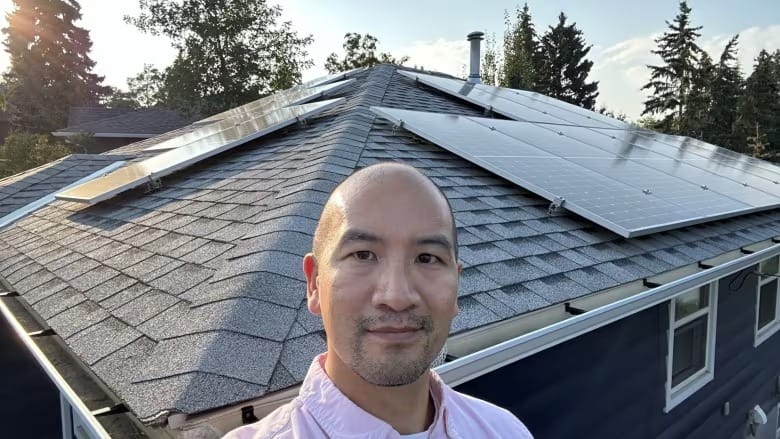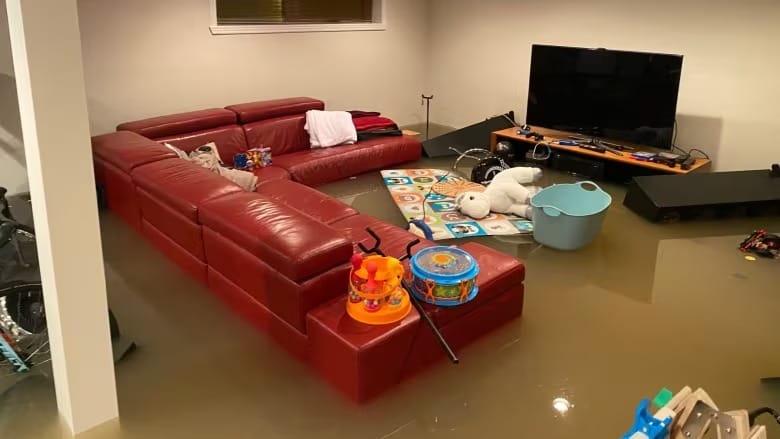Rules discourage Canadians from generating more solar power than they use
Rooftop solar poses both an opportunity and a challenge for utilities

Canada faces a growing need for clean energy to meet rising demand while striving for net-zero emissions to combat climate change. Many Canadians are keen to install rooftop solar panels to contribute to this effort and reduce their electricity bills. However, most jurisdictions limit the power generated by rooftop solar systems to match household consumption, and customers are only compensated through bill credits, not cash.
Hydro-Quebec emphasizes this policy by stating, "The customer's goal must be self-sufficiency and not sales."
Darren Chu, managing director of Calgary-based Utility Network and Partners, expresses frustration with similar restrictions in Alberta. "We have lots of customers who say, 'I have all this roof space and I'm only allowed to cover a small portion of it with solar panels because that's all my consumption will allow me to do. Why can't I export more?'" he said.

Chu's company offers a special pricing program called Solar Club for Albertans with rooftop solar, providing higher rates in summer when there is more surplus power and lower rates in winter. He advocates lifting the limits on rooftop solar generation.
But why do these restrictions exist, especially given the potential benefits of solar power for the grid?
Martin Boucher, a public policy researcher on energy at the University of Saskatchewan, explains that solar energy is "quite disruptive" to traditional utility practices. Historically, large, distant generators sold power to a single Crown utility at a low, wholesale price, which was then distributed to consumers at a marked-up price for regulated profit. Local grids were designed to transmit electricity in one direction—from long-distance transmission lines to homes, not the reverse.
Patrick Murphy, from the U.S.-based clean energy think-tank PSE Healthy Energy, points out that additional safety infrastructure, including new sensors and programming, is required if homes are feeding electricity back into the grid. He notes that "until protective infrastructure is in place, regulators cannot support distributed energy that generates more power than the customer's average use."
Moreover, local grids may need to be expanded to accommodate electricity flowing in both directions. Injecting solar power into the grid can also create "additional congestion," according to Jessei Kanagarajan, senior manager at Ontario's Independent Electricity System Operator (IESO). As a result, some IESO programs encourage customers to generate solar power for their own use to ease grid strain, but they do not allow excess electricity to be fed back into the grid.

Chu acknowledges that allowing customers to generate and sell as much solar electricity as they want would require costly upgrades to distribution networks. However, he argues that such upgrades are inevitable due to the expected rise in two-way electricity flows, driven by not just rooftop solar but also battery storage, bidirectional charging of electric vehicles, and virtual power plants.
Murphy adds that upgrading distribution networks to support more solar could reduce the need for other expensive infrastructure, like additional generation and transmission. He emphasizes that these upgrades are especially needed in disadvantaged neighborhoods, to ensure that outdated infrastructure doesn't hinder the equitable distribution of solar energy.
Francis Bradley, president and CEO of Electricity Canada, envisions a future where consumers become "prosumers," both drawing electricity from and feeding power back into the grid. This approach could help address the intermittency of solar power—since it's not always sunny—by smoothing out supply and demand through new technologies like virtual power plants.
However, utilities also face financial challenges with rooftop solar. Many customers with solar panels are compensated with bill credits for each unit of electricity they produce, a practice known as net metering. While this may seem fair to consumers, it can result in losses for utilities. They lose revenue when customers with solar panels buy less power, and net metering effectively allows customers to sell electricity to utilities at retail prices rather than wholesale prices. In some cases, this shifts the costs of maintaining grid infrastructure onto other customers.
SaskPower, for example, replaced net metering with net billing in 2019, paying solar customers only half the retail rate for the solar power they produce, to avoid an estimated $54 million cost by 2025. Despite these financial challenges, some utilities, like Saskatoon Light and Power, continue to offer net metering, recognizing the long-term potential of solar technology and exploring new business models.
Experts interviewed by CBC News suggest that dynamic pricing for electricity, which varies with supply and demand, combined with more batteries on the grid, could make distributed solar more financially viable for both customers and utilities.
With Canada's electricity demand expected to double or triple by 2050, utilities across the country are at different stages in integrating rooftop solar, but they view it as a key solution to meeting future energy needs. "They're all looking at this as one of the solutions to a future that is going to require essentially two to three times more kilowatt hours for the customer," said Bradley.





